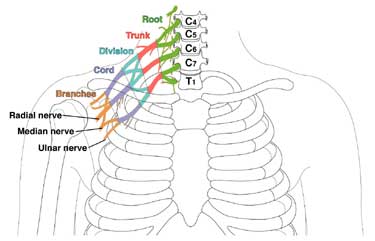Treatment for Brachial Plexus
What is the Brachial Plexus?
The brachial plexus is a group of nerves that conducts signals from the spinal cord to control movement. Injury to this group of nerves may range from mild stretching of the nerve to tearing away of the nerve root from the spinal column (nerve root avulsion).
Injuries may occur either through the birthing process or through a traumatic accident.




